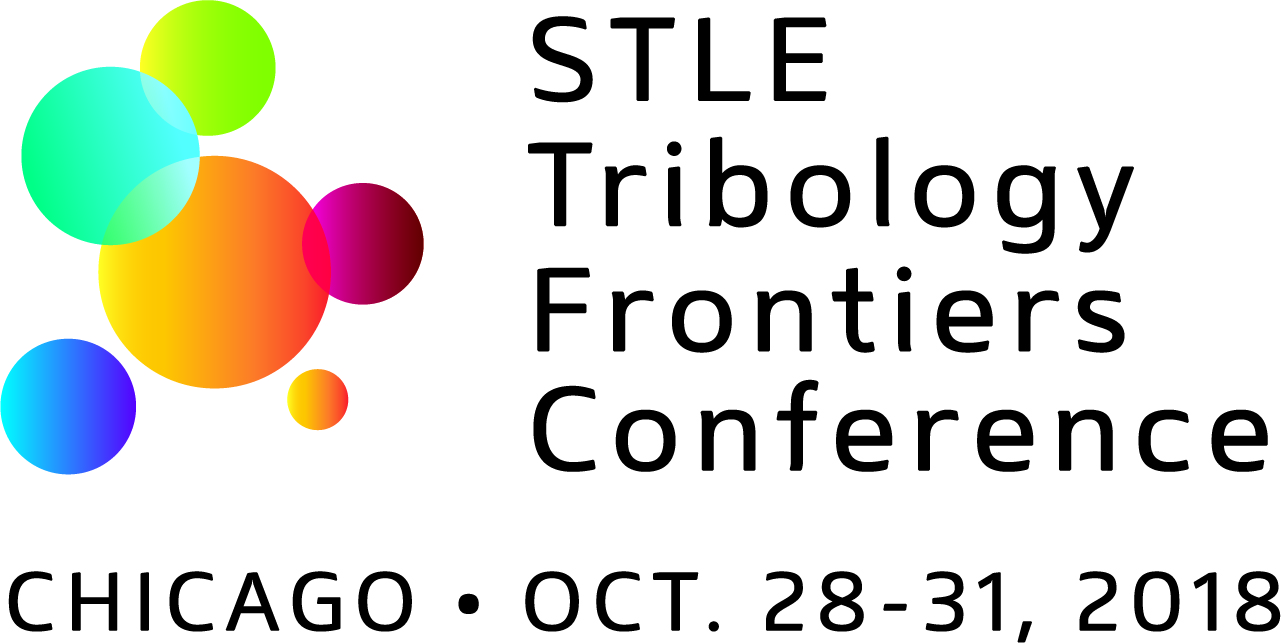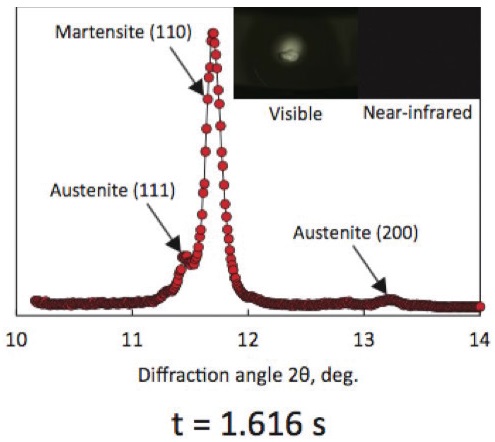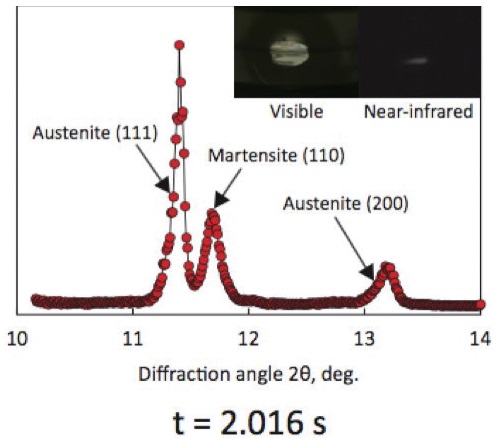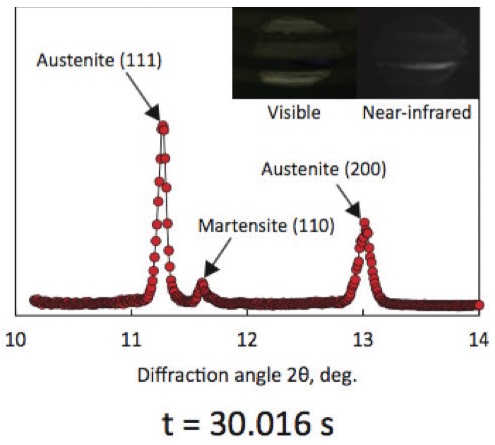In-situ Observation of Grain Structures During Scuffing of Steel by Synchrotron X-ray Diffraction
K. Yagi (1), T. Izumi (2), T. Adachi (1), S. Yamaguchi (2), K. Saito (3), J. Sugimura (1) | TLT 2016 TFC Abstract Highlights October 2018
1. Kyushu University
2. Toyota Central R&D Labs, Inc.
3. Toyota Motor Corp.
For the benefit of our readers involved in tribology research, TLT is publishing abstracts of the best papers presented at the 2016 Tribology Frontiers Conference. Registration for the 2018 TFC is now open. Find updates and program information at www.stle.org.

Co-sponsored by ASME Tribology Division.
In-situ observations of grain structures of friction surfaces were conducted during scuffing. The in-situ observation system comprises the synchrotron XRD, a visible camera and a near-infrared camera. A contact area was created between a rotating sapphire ring and a fixed martensitic steel pin. The figure shows in-situ visible images, near-infrared images and X-Ray Diffraction (XRD) spectra of a steel surface during scuffing. The use of synchrotron X-ray beam at SPring-8, Japan enables us to apply the XRD to in-situ analysis for friction surface. The in-situ observation system succeeds in capturing with 30 fps of XRD spectra, visible images, near-infrared images. Captured XRD spectra tell us a transition of the steel surface conditions during scuffing, such as phase, surface temperature, grain diameter and dislocation density.


